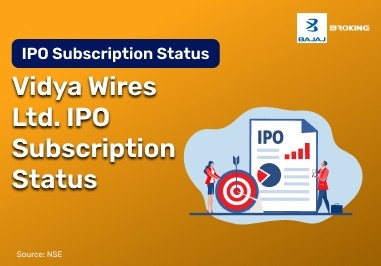Intraday trading encompasses buying and selling equities on the same trading day. Traders want to capitalise from modest price movements in order to create quick returns. To make money in intraday trading, one must understand market volatility, technical indicators, entry/exit points, and risk controls. Unlike long-term investing, intraday trading requires active monitoring and execution of trades within hours or minutes. The entire process of intraday trading hinges on market timing, discipline, and sound strategy implementation. The goal is not holding positions overnight, but closing them before the market ends.
Key Insights Before You Begin Intraday Trading
Market Timing is Crucial
Understanding the timing for intraday trading helps identify volatile market hours. Typically, the first and last hours of the trading session show the highest volatility.
Select Liquid Stocks
Choose stocks with high trading volume, as these offer easier entry and exit.
Use Technical Analysis Tools
Learn to read candlestick patterns, resistance/support levels, and indicators like MACD, RSI, and moving averages.
Avoid Overtrading
Excessive trading can lead to errors and unnecessary transaction costs. Plan your trades and stick to the plan.
Set Target and Stop Loss
Defining your target price and exit point is critical to managing losses and locking profits.
Stick to a Trading Plan
Avoid impulsive trades. Use a systematic approach that aligns with your strategy.
Learn About Brokerage Charges
Consider brokerage and other charges that can impact your overall gains.
Practice with Simulated Platforms
Gain experience with mock trading platforms before risking real capital.
Effective Strategies for Intraday Trading
Momentum Trading
This strategy involves identifying stocks moving in one direction with high volume. Traders enter trades when momentum is on their side.
Breakout Trading
Traders monitor stocks that break key resistance or support levels and place trades in the direction of the breakout.
Reversal Strategy
It identifies when a stock is likely to reverse its current trend. It works on the principle of price retracement and correction.
Gap and Go Strategy
Focuses on stocks that open significantly higher or lower than the previous day’s close. Trades are made in the direction of the gap.
Scalping
This involves placing multiple trades in a day for small profits each time. It requires quick decision-making and low spreads.
VWAP Strategy
Volume Weighted Average Price is used to assess the average price at which a stock has traded. Trades are placed when the price moves above or below VWAP.
Managing Risks in Intraday Trading
Position Sizing
Allocate only a specific percentage of your capital per trade to prevent major losses.
Stop Loss Mechanism
Always set a stop-loss order to automatically exit a losing position. It helps cap the downside risk.
Avoid Leveraging Excessively
Leverage magnifies both profits and losses. Use it cautiously and within limits.
No Emotional Trading
Trading based on emotion often results in poor decision-making. Stick to your plan, not instincts.
Maintain a Trading Journal
Document each trade, entry, exit, reason, and outcome. It helps improve future performance.
Be Updated with News
Economic indicators, company earnings, or policy changes can affect price movement. Stay informed to adjust strategies accordingly.
Tips for Successful Earnings in Intraday Trading
Master Technical Charts
To effectively profit from intraday trading, understand charts like candlesticks, line, and bar charts to spot entry and exit points.
Trade Volatile but Liquid Stocks
Pick stocks that have enough movement and volume to give profit opportunities and smoother execution.
Avoid Holding Overnight Positions
The process of intraday trading requires positions to be closed the same day to reduce risks from overnight news or events.
Limit Number of Trades
Fewer high-quality trades are better than numerous poorly thought-out ones.
Understand Market Sentiment
Use tools like market breadth indicators or news sentiment to gauge the direction.
Stick to a Specific Sector or Stock Set
Familiarity improves decision-making and forecasting.
Use Alerts and Automation
Set price alerts and use trading tools for faster response and trade execution.
Maintain Discipline
Follow your rules, even in volatile conditions. Intraday trading rewards consistency.
Final Thoughts
Success in intraday trading comes from discipline, preparation, and the right strategy. With market awareness, clear risk parameters, and a steady mindset, it is possible to make money in intraday trading. Rather than relying on chance, informed decisions based on analysis help build consistency. Whether you are starting or refining your approach, it is essential to focus on the process and avoid emotional triggers. Keeping track of performance and adapting over time can improve efficiency.
Disclaimer: This blog is for educational purposes only and does not constitute investment advice.














